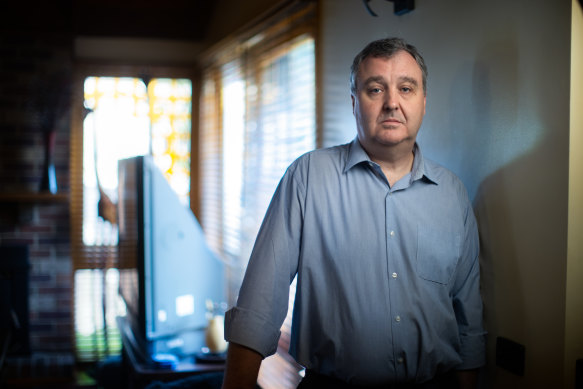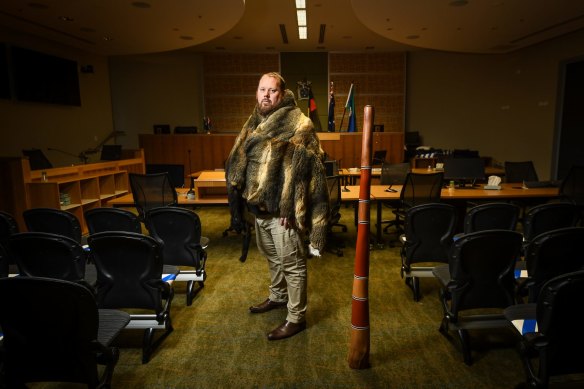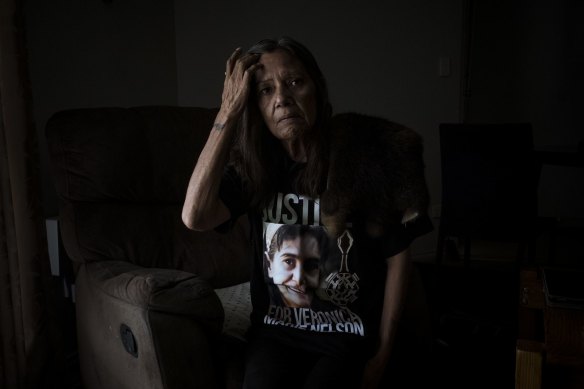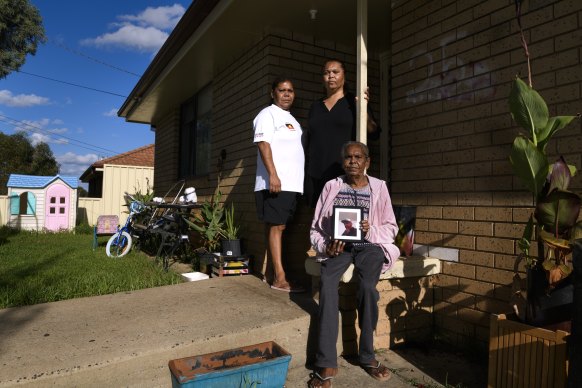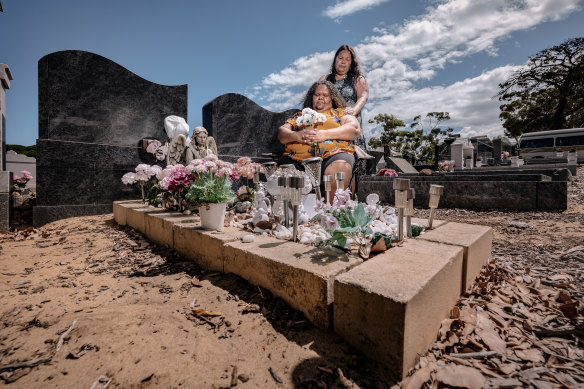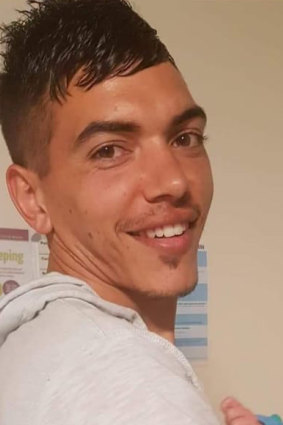‘Patients aren’t guinea pigs’: Medical staff blow whistle on prisons
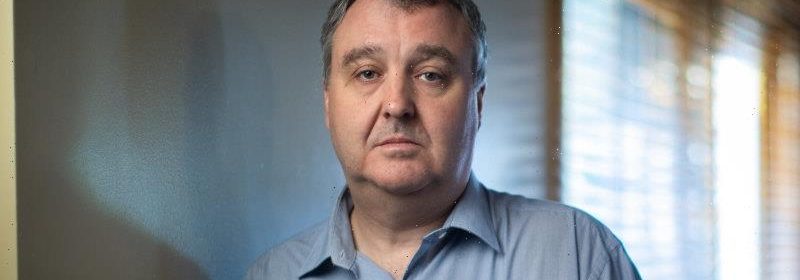
Warning to Aboriginal and Torres Strait Islander readers: This story contains images and references to deceased people.
Prison healthcare whistleblowers have accused the companies operating the nation’s biggest jails of a culture of medical neglect and cover-up that has cruelled attempts to bring down the number of Indigenous people dying in custody.
Doctors, nurses, experts and victims’ families have described chronic understaffing, as well as indifference to welfare of vulnerable people, particularly Indigenous inmates, and called for immediate action from state and federal governments. They described inmates dying by suicide despite family warnings, illegal handling of medicines and patients being left to suffer in their cells with life-threatening illnesses.
Dr Colin Rattray-Wood has blown the whistle on conditions in the biggest prisons in NSW and Victoria.Credit:Simon Schluter
The revelations revive two long-standing and overlapping issues: the failure to adequately implement the recommendations of the 1991 Royal Commission into Indigenous Deaths in Custody and the reliance on for-profit private health services in some jails. The number of Indigenous people dying in prison every year has remained well above what it was when the commission was held.
Whistleblower Colin Rattray-Wood, a prison doctor who has worked in 13 jails across NSW and Victoria, said prisoners were denied appropriate care, including an Indigenous prisoner left dying and in excruciating pain for days in a NSW jail observation room.
“The failure to deliver adequate healthcare and the instinct to cover things up when it goes wrong hurts the most vulnerable prisoners, and that often means Indigenous prisoners,” Rattray-Wood told an investigation by The Age, The Sydney Morning Herald and 60 Minutes.
He was so concerned at the standard of care at Australia’s largest prison, the NSW Clarence Correctional Centre near Grafton, that in late 2020 he confronted its most senior officials, who admitted private operator Serco had failed to provide appropriate care at the jail in the period after it opened.
“There’s a lot of things that we didn’t do right,” a senior Serco manager at Clarence, Andrew Mead, told Rattray-Wood in a private briefing about the standard of health services when the privately run jail opened earlier in 2020.
Clarence general manager Glen Scholes, also employed by Serco, conceded to Rattray-Wood that Serco’s provision of healthcare at the jail was poor, saying: “We should have done better, we could have done better … hopefully Serco will never do it that way again.”
A leaked email from a NSW government prison regulation official confirms Rattray-Wood’s concerns were substantiated by jail inspectors. They said health service problems at Clarence were “significant and systemic” and “will take some time to address”.
Serco undertakes to maintain prisoner welfare as part of its contract to run these facilities. The company said in a statement that its health services were run by qualified professionals and were subject to independent review under its accreditation.
It said the issues raised about Clarence’s early operations were investigated and addressed.
The decision of the insiders to tell their stories, some at risk to their careers, comes as the mothers of Indigenous prisoners who have died or suffered medical neglect have demanded action from state and federal governments.
They include two mothers whose sons killed themselves at the Serco-run Acacia jail east of Perth after family members warned jail staff the two men were at risk of self-harm.
Stephanie Hills, a nurse who dealt with Indigenous woman Veronica Nelson in Victoria’s largest women’s jail before Nelson died, has also broken her silence about the two years she worked for healthcare company CorrectCare.
A state coroner recently ruled Nelson’s death was preventable, inhumane and a shameful stain on the justice system.
Hills said staffing at the Dame Phyllis Frost Centre in Melbourne was often woeful, and a failure to employ Indigenous support workers or those with appropriate health expertise exposed vulnerable inmates to preventable harm.
Prisoners at the jail sometimes waited up to 12 weeks to see a GP or were left in pain because of the absence of proper care, she said.
“You or I could walk down the road to a bulk-billing super clinic and see a doctor within an hour if we needed to. There’s no reason why healthcare should be any different in prison than it is in the community outside of prison,” Hills said.
“There would be a dentist once a week for a day, just during the day for all the entire prison population.”
Hills said CorrectCare and the jail had attempted to cover up medical neglect. She observed a prison doctor fail to get off his chair and deliver appropriate medical support to the desperately unwell Nelson. Instead, Nelson died in a cell after calling for help more than 40 times over three days.
“She was the most unwell woman that I had ever recepted [sic] into the prison … which is why I suggested that she needed to go to the hospital,” Hills said in an interview.
“I still hold a lot of guilt. Because more should have been done … It was a preventable death, and it should have been prevented.”
Hills said that in August 2020 she quit CorrectCare, which recently lost its contract to deliver health services in Victorian jails to another multinational private firm because she “couldn’t provide the care that I wanted or needed to”.
She also said a CorrectCare manager laughed at her when she pushed for appropriate COVID-19 protective wear.
Victorian public servant Troy Williamson, who has played an official role in many inquiries into Indigenous deaths in custody as the most senior Indigenous official at the Victorian Coroners Court, said current rates of Indigenous incarceration and deaths were a national disgrace.
He called on state and federal governments to implement immediately all of the 1991 royal commission’s 339 recommendations. Federal and state governments have claimed to have implemented most of the recommendations, but critics say key proposals, such as the use of imprisonment as a last resort and the provision of culturally appropriate healthcare to Aboriginal people in custody, have not been properly taken up.
“We’re still not taking our recommendations seriously enough. We’re not treating Aboriginal lives as important as what they are,” Williamson said.
Williamson, who was recently appointed director at another Victorian government department, made his comments on the eve of coroner Simon McGregor’s findings into Nelson’s death.
The inquest findings into the death of Nelson “and every other [Indigenous] death in custody” around Australia needed to be viewed together as an urgent catalyst for change, he said.
He described his frustration at coronial hearings that failed to prompt meaningful reform as “a process of the system that is happy to fail”.
Williamson made the comments in a previously unreported address to elders and Indigenous community members in January. He told them he could be sacked for speaking out without government approval but believed the issue was too pressing.
Troy Williamson at the Coroners Court of Victoria, where, until recently, he was the most senior Indigenous person.Credit:Justin McManus
Since the 1991 royal commission, more than 525 Indigenous Australians have died in prison or police custody. The number of Indigenous inmates dying every year is higher now than prior to the commission. There have been an average of 16.6 deaths a year since 1991, compared with 11 deaths a year between 1980 and 1989. Indigenous Australian men are almost 10 times more likely to die in prison custody than non-Indigenous men, according to Australian Institute of Criminology figures.
In his findings, McGregor referred CorrectCare for possible prosecution and concluded that if the recommendations of the 1991 royal commission had been properly implemented, Nelson would probably still be alive.
CorrectCare said it was reviewing the coroner’s findings and also pointed to the fact staff were accredited.
“We always aim to provide the best possible care, but acknowledge at times we could do better,” it said in a statement.
Donna Nelson, the mother of Veronica, said change was needed across Australia. “No other mother should suffer like the way I did,” she said.
Donna Nelson, whose daughter Veronica died in custody, pictured at her home in Mooroopna, Victoria.Credit:Chris Hopkins
Blowing the whistle
Rattray-Wood said he had decided to risk his career and speak out after making repeated internal complaints about the provision of healthcare in jails, including for CorrectCare in Victoria in 2019 and 2021, and for Serco in NSW in 2020.
He said failings by CorrectCare in Victoria left prisoners in “great pain waiting for an ambulance because I didn’t have adequate painkillers to treat them”, and in two cases may have contributed to potentially preventable deaths, which the doctor had disclosed to the state coroner.
After moving to NSW, Rattray-Wood said he was advised by his medical insurer to quit his post as a senior doctor at the Serco-run Clarence Correctional Centre in July 2020, just weeks after it had opened its health service.
He said this was because the new prison’s health service was in “complete and utter disarray”.
“Effectively, what we did in the medical centre, is we tested our systems and failed on real people. Now, custodial patients aren’t guinea pigs,” he said.
After Rattray-Wood shifted to the nearby Grafton Base Hospital, he treated an Indigenous prisoner from Clarence with a life-threatening stomach condition who was “one hour from being a death in custody”.
Rattray-Wood, along with another senior doctor from Grafton Hospital who briefed this masthead confidentially as he was not authorised to speak publicly, said the prisoner, William Doolan, had received grossly inadequate care at Clarence that would have cost him his life without emergency intervention at hospital.
“He was in absolutely enormous pain when I met him. And I believe he would’ve been that way for quite some time,” Rattray-Wood said.
William Doolan’s sisters Betty and Tanya Doolan with their mother, Robyn Doolan, in Cowra, NSW.Credit:Rhett Wyman
“Now, to leave someone like that … for three days going bad before they were found by accident, is not something you want to see in the First World in the 21st century.”
Doolan’s mother, Robyn, said she visited her son after he was flown from Grafton Hospital to the Prince of Wales Hospital in Sydney.
“He was unconscious in the bed, all tubes coming out of his nose, his arms,” she said. “When he could finally get on his feet a few days later, he had to get pushed in a wheelchair. He told me: ‘I thought I was going to die, Mum.’ That’s how much pain he was in until they did something about it.”
Rattray-Wood said he encountered several cases of neglect involving Clarence inmates: one man took 36 paracetamols simultaneously because he had not received help in three weeks for a painful condition.
Another with melanoma was not given his chemotherapy medication for six weeks. One woman was double-dosed and prescribed 28 Valium tablets over three days.
The cases prompted Rattray-Wood to document his concerns and those raised by other staff at Clarence.
One medical contractor in the jail told Rattray-Wood that the handling and distribution of medicines, including methadone, was dangerously haphazard and potentially “illegal”.
Another Clarence health service insider described an inmate who was not sent to hospital despite “passing urine that looked like chicken soup” and appearing “clearly really unwell”.
Doctors and nurses employed at Clarence by Serco told our media investigation separately about shambolic and potentially illegal management of medication, critical staffing shortages, low morale, overcrowding and poor management.
After Rattray-Wood confronted the most senior officials at the jail with his concerns, prison general manager Glen Scholes said Serco had made mistakes in its delivery of healthcare when the jail opened.
“We want it to be A-grade service, not a ‘we just got to over the line’ service,” Scholes said.
Senior Serco manager Andrew Mead said there were a “lot of things that we didn’t do right”.
“Serco, I think, are getting used to running big health services. It’s not something that they’re overly familiar with,” Mead said.
In late September 2020, a fortnight after William Doolan’s near-death surgery, a NSW government official responsible for monitoring jail healthcare, Trevor Puckering, emailed Rattray-Wood and told him a prison monitoring team had inspected Clarence.
“We were able to verify many of the issues you reported to me previously,” Puckering wrote.
In addition to NSW, where Serco won a $2.6 billion, 20-year state government contract to run Clarence, Serco runs Acacia Prison in Western Australia and the Adelaide Remand Centre.
It also manages Australia’s immigration and detention centres and provides healthcare to Australia’s 80,000 soldiers at army bases.
Two young men gone
Concerns about Serco’s provision of healthcare to Indigenous inmates have been raised in the cases of two young men who took their own lives at Acacia Prison, 60 kilometres east of Perth.
Karen Blanket (left) and Connie Moses-Penny at Fremantle Cemetery, where their sons are buried. Both young men died at Acacia Prison east of Perth.Credit:Tony McDonough
Connie Moses-Penny, the mother of Stanley Inman, said family members warned Serco of the 19-year-old’s mental state just hours after he had told his sister: “I don’t feel like being alive”.
Four days after Stanley’s sister Jacinta was assured the prison would “keep an eye on him”, the family learned he had gained access to a jail storeroom and hanged himself.
“They should have done more to save my boy,” Connie Moses-Penny said.
A year earlier, 30-year-old Jomen Blanket took his own life in Acacia after his family, too, warned Serco he needed support.
Jomen Blanket took his own life at Acacia Prison.
Jomen’s mother, Karen, said that after her son told her he wanted to self-harm, she “drove out to the prison and I told them”.
“I wanted to speak to the supervisor, but they wouldn’t let me speak to her. So I went home, and then I went back up again, and I sat there for half a day just crying and asked them, ‘Can someone go down and check on my son?’ And they were just saying, ‘Oh, he’s all right. There’s nothing wrong.’ ”
A short time later, she learnt that he had hanged himself.
George Newhouse, who leads the National Justice Project and has represented several Indigenous families at coronial inquests, said along with the Nelson family’s lawyer, Ali Besiroglu of Robinson Gill, that coroner McGregor’s stunning findings in the Nelson inquest should be a wake-up call for the Albanese government and all states and territories.
Besiroglu said the findings would be worthless without reform, noting the Victorian government had flagged changes to bail laws that led to record numbers of Indigenous women being placed in custody.
Newhouse, who is the lawyer for the Inman and Blanket families, said the provision of “appalling healthcare” to Indigenous prisoners was a feature of many deaths in custody, a systemic problem compounded by the failure of some states, including Western Australia, to properly investigate deaths in custody.
Serco declined to comment on the two West Australian cases, saying they were still subject to coronial inquests.
Watch the 60 Minutes investigation on Sunday on Nine at 8.40pm
Crisis support can be found at Lifeline: 131 114 and lifeline.org.au.
The Morning Edition newsletter is our guide to the day’s most important and interesting stories, analysis and insights. Sign up here.
Most Viewed in National
From our partners
Source: Read Full Article

